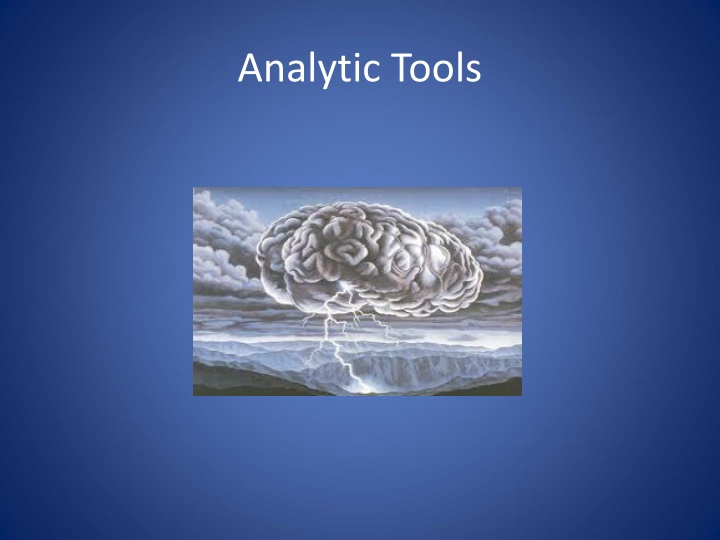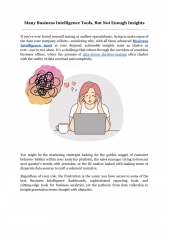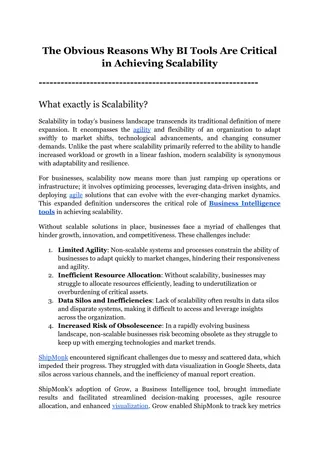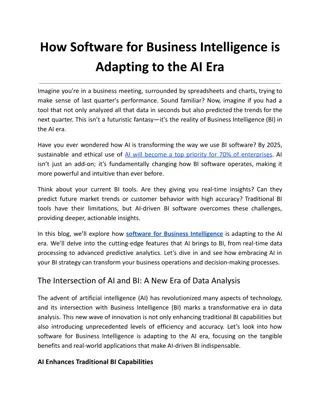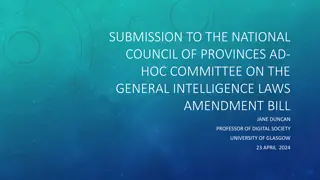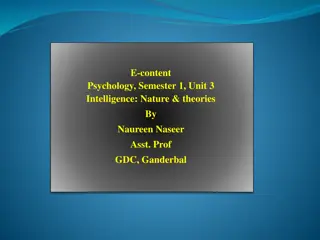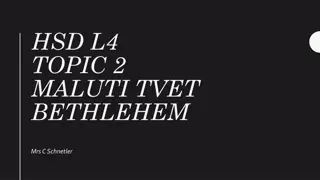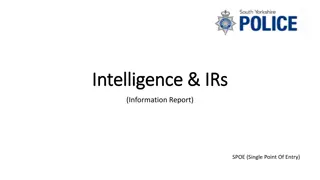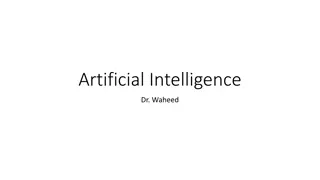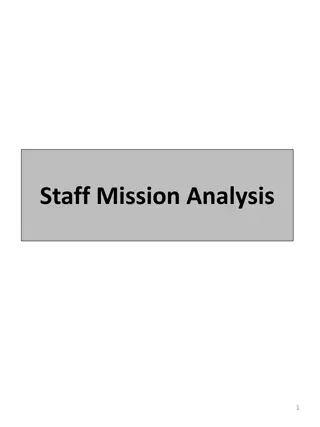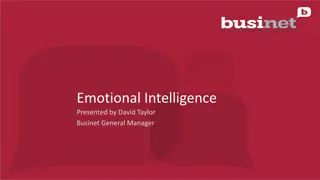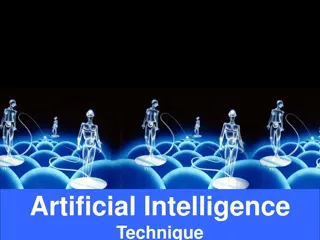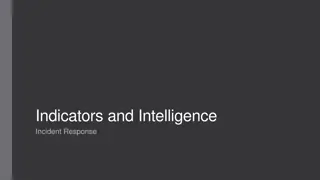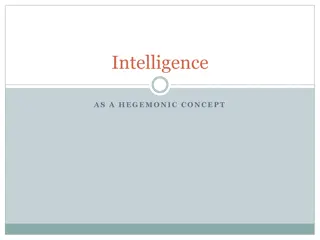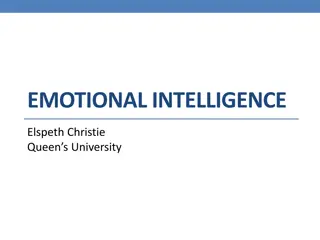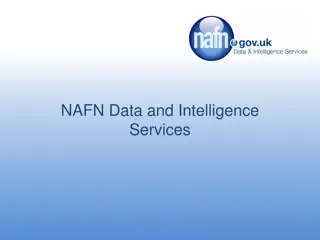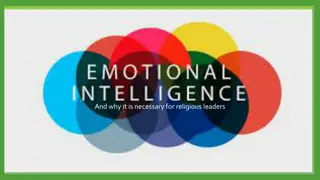Enhancing Intelligence Analysis: Techniques and Tools
Learn about the essential factors and techniques for effective intelligence analysis, such as hypotheses, assumptions, evidence, brainstorming, devil's advocate, and more. Discover how these tools can aid in improving analysis and decision-making processes. Dive into the world of structured analytical techniques and insightful methodologies outlined in the Tradecraft Primer.
Download Presentation

Please find below an Image/Link to download the presentation.
The content on the website is provided AS IS for your information and personal use only. It may not be sold, licensed, or shared on other websites without obtaining consent from the author.If you encounter any issues during the download, it is possible that the publisher has removed the file from their server.
You are allowed to download the files provided on this website for personal or commercial use, subject to the condition that they are used lawfully. All files are the property of their respective owners.
The content on the website is provided AS IS for your information and personal use only. It may not be sold, licensed, or shared on other websites without obtaining consent from the author.
E N D
Presentation Transcript
The best intelligence collection in the world is a failure without good analysis.
Three Basic Analytical Factors Three Ingredients Of Analysis Hypothesis An idea about what is happening, did happen, or could happen Assumption (we use knowledge from past experience/trends that we see) Evidence
These 3 factors are not linear, but build on each other. We view evidence in terms of assumptions & hypotheses. Hypotheses rest on already- existing evidence. New contrary evidence can change hypotheses. Assumptions & hypotheses can be tough to change.
Five analytical techniques that can help: Brainstorming Devil s Advocate Red Teams Link Diagrams Analysis of Competing Hypotheses
Source for Analysis A Tradecraft Primer: Structured Analytic Techniques for Improving Intelligence Analysis https://www.cia.gov/libra ry/center-for-the-study- of-intelligence/csi- publications/books-and- monographs/Tradecraft% 20Primer-apr09.pdf
Brainstorming The more ideas the better Build one idea on another Crazy ideas are okay Do not critique ideas while brainstorming
Some ways to make it work: Keep group of manageable size. Try to avoid major rank disparities. Diversity is good. Keep time parameters. Have a good record keeper.
Devils Advocate A person who takes an opposite position and who questions the accepted assumptions. Tries to prove opposite conclusions.
Tools for Devils Advocates: The different slants must be more than just I disagree. Role is to present alternatives, not to win the debate. Not too junior, not too senior. Must have good background on subject.
Red Team Analysis Try to think like the opposition. Requires deep knowledge of opponents. At best, can be a full-time assignment. Members need to be creative, imaginative, and open.
Red Teams More involved in role playing than devil s advocates. Particularly good for threat & vulnerability assessments.
Link & Network Analysis Provide graphical representations of relationships. Very useful for criminal & terrorist group analysis. As with any tool, an aid to analysis, not the final result.
Association Matrix - Shows association between individual persons only = Known association = Suspected association
Association Matrix Carlos is associated with Bill and George. Bill is associated with Carlos and George George is associated with Carlos and Bill - and may be associated with Ahmed Heinrich is associated with Sam Ahmed may be associated with George Sam is associated with Heinrich. Sam is dead.
ACTIVITIES MATRIX SHOWS WHO IS ASSOCIATED WITH WHAT
ACTIVITIES MATRIX Tom Dick Harry Bonnie Who is associated with.....? Clyde
LINK DIAGRAMS Reflect information from both matrices Are easy to read and interpret Help you to ask the right question Are effective briefing tools
Link Diagram Show in an easy to read format: Personal and non-personal links Participants in activities Internal and external relationships Internal and external structures Lines of command, control, and communication
Link Diagram Graphics People (single individuals) JONES Alias or AKA BROWN GREEN Non-personal entities (places, activities, organizations) PINK PANTHERS
Link Diagram Graphics = CARTER = JONES Strong or confirmed personal association
Link Diagram Graphics 2 - Carter is associated with Green, Jones & Brown - Jones and Brown are JONES GREEN associated - Green and Jones are associated - Green and Brown are NOT associated BROWN CARTER
Steps In Building a Link Diagram Organize all available data Complete both matrices Transfer information from matrix format to link diagram format
Network diagram DELTA ALPHA BRAVO ECHO CHARLEY
Target & association matrix Alpha Bravo Charley Delta Echo
END RESULT DELTA ALPHA BRAVO ECHO CHARLEY
What does ACH do? Reduces biases Spurs new ideas Stimulates systematically considering evidence (frame work to objectively consider all the evidence)- it s structured tool that help you consider all the evidence) Can help detect denial and deception Emphasizes diagnostic evidence (evidence that support some hypotheses but not other) make you realize which evidence support some hypotheses but other. Often overlooked in intuitive analysis (not using structured tools) Assists in developing collection Provides a record
Analysis of Competing Hypotheses 2 1. Generate hypotheses 2. List significant evidence & arguments 3. Test (Compare) evidence against each hypothesis 4. Refine (Update) matrix 5. Evaluate each hypothesis/draw tentative conclusions 6. Sensitivity assessment (Taking a look at most contradictory evidence /seeing how reliable the evidence is/Re-sorting) 7. Report conclusions 8. Forecast future developments
Step 1: Developing Hypotheses Brainstorming works best Hypotheses must be: Mutually exclusive (None of these hypotheses are the same or can be true at the same time) Collectively exhaustive (consider all the possibilities) Relevant Testable Simple
Key Assumption Check 1 Key Assumption Check Method 1. Identify all the key assumptions that an analyst or group holds about a situation, group, or topic. Record on whiteboard or on a simple template.
Key Assumption Check 2 2. Examine each assumption by asking: o Why is this assumption correct? o How confident am I that this assumption is still valid? o What could invalidate this assumption? o Could it have been true in the past but false now? o If the assumption turns out to be invalid, how might it affect my analytic judgment?
Key Assumption Check 3 3. Assign each assumption to one of the following categories: o Basically supported or solid. o Supported but with some caveats. o Unsupported or questionable.
Step 2: Evidence Gather and list significant evidence Includes all INTs : (Intelligence disciplines) Signals, Human, Open Source, etc. Identify any assumptions Think about what is missing
Evaluating Evidence Evaluate evidence based on Relevance of information Credibility of information Reliability of information (sources If not relevant, not evidence If working on multiple hypotheses for one intelligence problem, may be relevant to some and not to others Can be directly or indirectly relevant
Evaluating Evidence 2 Motive (Reason) To Lie? Possibility Of Deception? Obvious Errors In Reporting? Is Information Corroborated? (do multiple sources say the same thing) Did Collectors/Users Introduce Bias? (the initial interpretation of data, did they put their own judgements, or bias)
Evaluating Evidence 3 Evaluate evidence based on Relevance of information Credibility of information Reliability of information (sources/ collection methods/whether the source have access to the information)
Step 3: Evidence + Hypotheses Consider how each item of evidence relates to each hypothesis Determine how consistent each item of evidence is with each hypothesis
Balancing Evidence Identify items that have the greatest impact Are the biggest inconsistencies from a single source or single INT (Intelligence disciplines) ? Are there changes over time? Is there any definitive evidence? What is the credibility, reliability and relevance of the sources? What are the consequences if the critical items (evidence) are wrong?
Issues with ACH be Can be time-consuming Can require exacting language in developing hypotheses (very precise language/clear the way you state your hypotheses) Can lead to over-confidence in numbers (too much reliance on the numbers generated by the matrix) ACH is an aid to judgment
